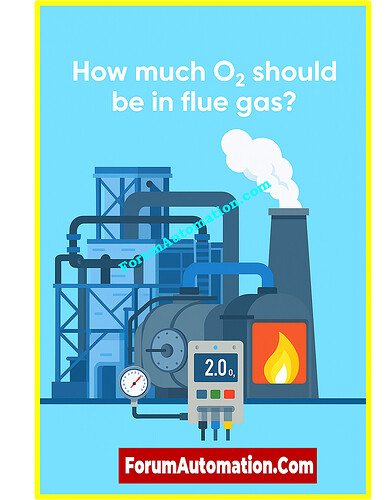What should 02% be for flue gas analysis?
What should 02% be for flue gas analysis?
The amount of oxygen (O₂) in flue gas analysis shows how well a boiler, furnace, or industrial heating system is burning fuel. In a perfect world, full combustion would use up all the oxygen and leave behind only carbon dioxide (CO₂), water vapor, and trace gases. But in real life, some more oxygen is needed to make sure the fuel burns completely and to keep carbon monoxide (CO) from forming.
The flue gas in most industrial boilers and furnaces should have about 2% to 4% O₂ by volume of oxygen. Combustion is very efficient at 2% O₂, which means that the air-to-fuel ratio is near to perfect and there isn’t much extra air. If the air supply is less than 2%, it could mean that the combustion isn’t complete, which could lead to CO accumulation and more soot. If the number is more than 4%, it means there is too much extra air, which lowers thermal efficiency since the warm air is wasted through the stack.
The kind of fuel also affects the target O₂ level. Natural gas usually works well with 2% to 3% O₂, but fuel oil and coal may need a little more extra oxygen because they don’t blend as well and can make more soot. Oxygen levels after combustion are frequently greater (8.5–10%) in home systems than in industrial furnaces because the systems are designed and built to be more efficient.
So, 2% O₂ in flue gas is usually a good sign of efficient combustion in industrial systems because it strikes a good balance between safety, complete fuel burn, and little energy waste. Continuous monitoring makes sure that everything runs well and that the rules are followed.
